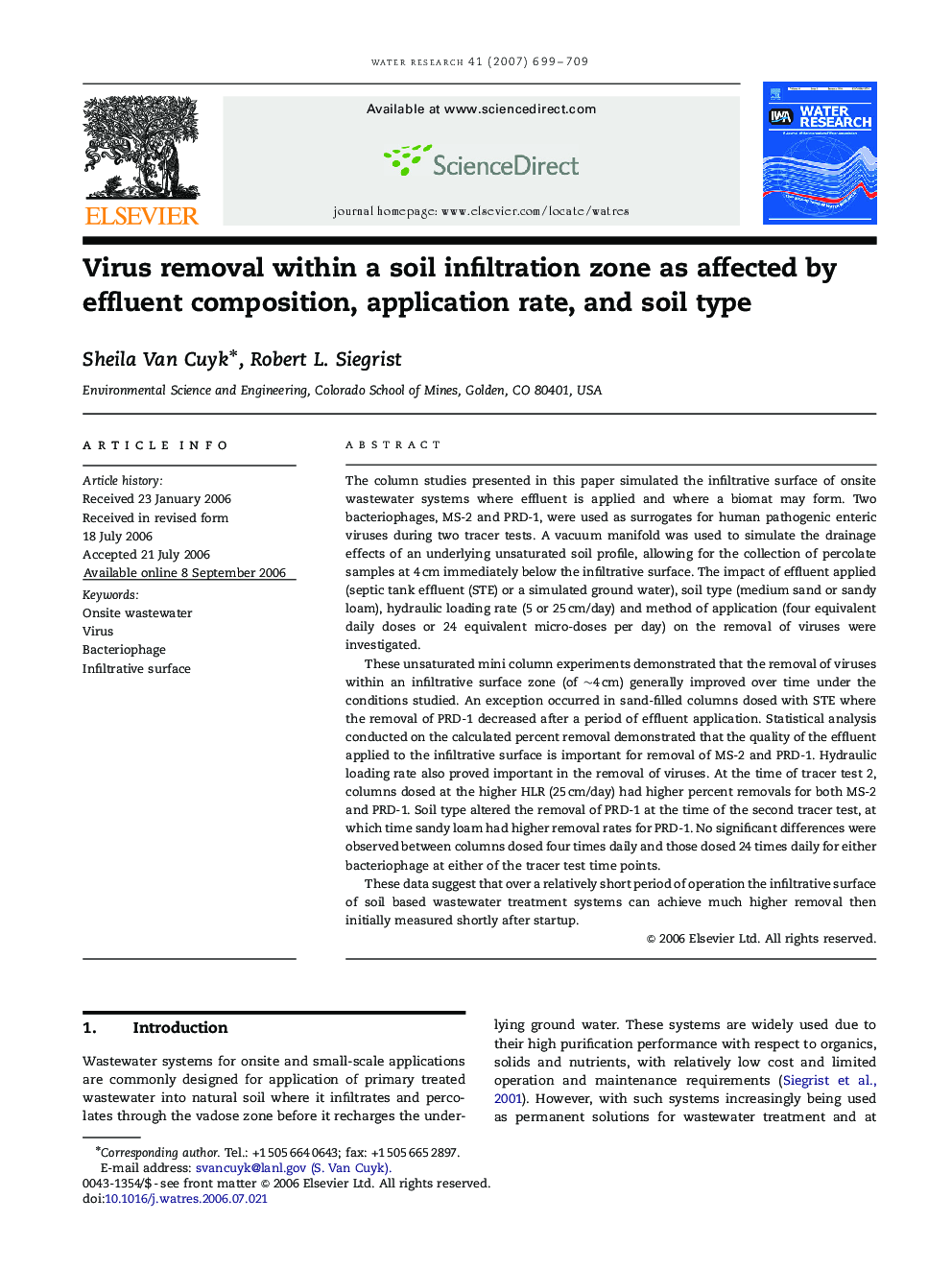| کد مقاله | کد نشریه | سال انتشار | مقاله انگلیسی | نسخه تمام متن |
|---|---|---|---|---|
| 4486754 | 1316999 | 2007 | 11 صفحه PDF | دانلود رایگان |

The column studies presented in this paper simulated the infiltrative surface of onsite wastewater systems where effluent is applied and where a biomat may form. Two bacteriophages, MS-2 and PRD-1, were used as surrogates for human pathogenic enteric viruses during two tracer tests. A vacuum manifold was used to simulate the drainage effects of an underlying unsaturated soil profile, allowing for the collection of percolate samples at 4 cm immediately below the infiltrative surface. The impact of effluent applied (septic tank effluent (STE) or a simulated ground water), soil type (medium sand or sandy loam), hydraulic loading rate (5 or 25 cm/day) and method of application (four equivalent daily doses or 24 equivalent micro-doses per day) on the removal of viruses were investigated.These unsaturated mini column experiments demonstrated that the removal of viruses within an infiltrative surface zone (of ∼4 cm) generally improved over time under the conditions studied. An exception occurred in sand-filled columns dosed with STE where the removal of PRD-1 decreased after a period of effluent application. Statistical analysis conducted on the calculated percent removal demonstrated that the quality of the effluent applied to the infiltrative surface is important for removal of MS-2 and PRD-1. Hydraulic loading rate also proved important in the removal of viruses. At the time of tracer test 2, columns dosed at the higher HLR (25 cm/day) had higher percent removals for both MS-2 and PRD-1. Soil type altered the removal of PRD-1 at the time of the second tracer test, at which time sandy loam had higher removal rates for PRD-1. No significant differences were observed between columns dosed four times daily and those dosed 24 times daily for either bacteriophage at either of the tracer test time points.These data suggest that over a relatively short period of operation the infiltrative surface of soil based wastewater treatment systems can achieve much higher removal then initially measured shortly after startup.
Journal: Water Research - Volume 41, Issue 3, February 2007, Pages 699–709